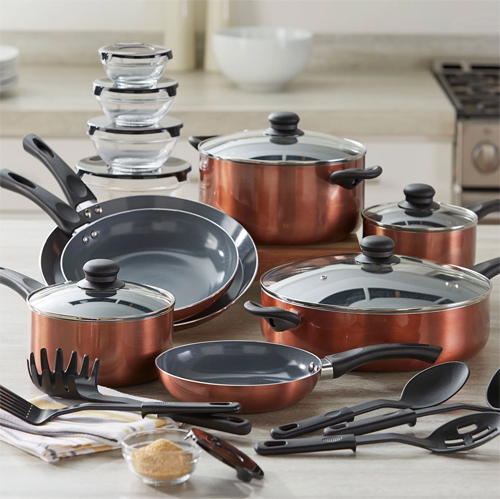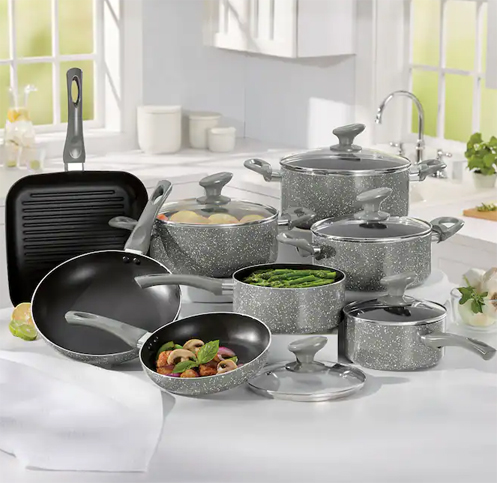Dear friends, do you know? Aluminum basins are also divided into several categories. what are these? Please read below.

Among aluminum pots, there are also bare aluminum pots that appear in original colors, but they are relatively rare. The material of this type of aluminum pot is generally 3 series alloy. In the past, there was also pure aluminum (1 series), but pure aluminum was less strong. As for cast aluminum, that's rare. Surface treatment methods generally include polishing, grinding, whitewashing, etc.
Another characteristic of bare aluminum pots is that since the aluminum is in direct contact with the ingredients, it can easily turn black even if tap water is boiled. It is generally thought that the principle is that aluminum alloys reduce certain minerals, such as iron. This is also the reason for aluminum migration. The amount of migration is approximate as described above.
For those seeking alternatives or specialized solutions, consulting with aluminum pot manufacturers can provide insights into innovative materials or coatings that address issues like discoloration and aluminum migration.
The most popular type of aluminum pan today is non-stick (organic-coated). The inner surface is covered with a non-stick coating, mainly PTFE, with a small amount of ceramic coating made of polysiloxane. The outer surface includes enamel, high-temperature baking paint, non-stick coating, hard anodizing, natural color (bare aluminum), etc.
The non-stick coating on the inner surface has already been discussed and will not be repeated here. Compared with bare aluminum pots, its aluminum migration under acidic simulants is greatly reduced, below 1ppm. But the disadvantage is that the organic coating itself contains poisons. Although the amount is small, it often exceeds the limit. Substances here include polycyclic aromatic hydrocarbons (PAH), primary aromatic amines (PAA) and bisphenol A (BPA).
Some choose non-stick coating on the outer surface to increase the ease of cleaning of the outer surface. But the shortcomings are also obvious. The inner surface of PTFE is not easy to exceed 250℃ and decomposes slightly. However, if the outer surface contacts the flame, the temperature will be very high and many harmful substances will be produced, such as perfluoroisobutylene, polycyclic aromatic hydrocarbons, etc.
Another major category of aluminum alloys is the anodized type, which has an anodized surface. Common anodizing treatments include oxalic acid oxidation (natural color), sulfuric acid anodizing (imitation porcelain), hard anodizing, etc.
Anodized aluminum alloys are much more stable than bare aluminum under neutral conditions. When tested in the usual neutral salt spray test (NS), white rust (hydrated alumina) is less likely to appear for 192 hours. Usually bare aluminum will show severe white rust within 8 hours.
But under acidic conditions, especially organic acids (the migrating acid simulants are acetic acid and citric acid), the oxide film corrodes faster than bare aluminum. The test was conducted by boiling 4% acetic acid for 0.5 hours and then soaking it in Chinese standard 4% acetic acid for 24 hours. In terms of methods, the value of bare aluminum is generally 8-10ppm, and the anodized film will exceed 50ppm. Therefore, it is best not to use anodized aluminum alloy cookware for cooking acidic foods. The pH value of such acidic foods is generally <3, such as vinegar, pure lemon juice, etc. However, there is no problem if you eat some weakly acidic foods. The aluminum alloy anodized film is still very stable under pH>4 conditions.
Anodized products are rarely seen on the market now, but the most common ones are pressure cooker products.
There are a small number of cast aluminum pots on the market now. Aluminum alloy casting has requirements on fluidity. Among common cast aluminum alloys, aluminum-silicon cast alloys have the best fluidity. Therefore, the cast aluminum alloys in the cookware industry are basically aluminum-silicon series. Content range is 3-13%.
Casting methods include die casting and pouring.
Die casting can achieve thinner pot bodies and rapid production, and is the most widely used process. High silicon cast aluminum is usually used, with a silicon content of 10-13%. This aluminum pan is then made into a coated pan.
Cast aluminum pot is large in size and slow in production, but low-silicon cast aluminum can be used, with the silicon content generally being 3-5%. The advantage of low-silicon cast aluminum is that it can use hard anodizing technology, which is the most commonly used technology for cast aluminum pots to produce woks.
